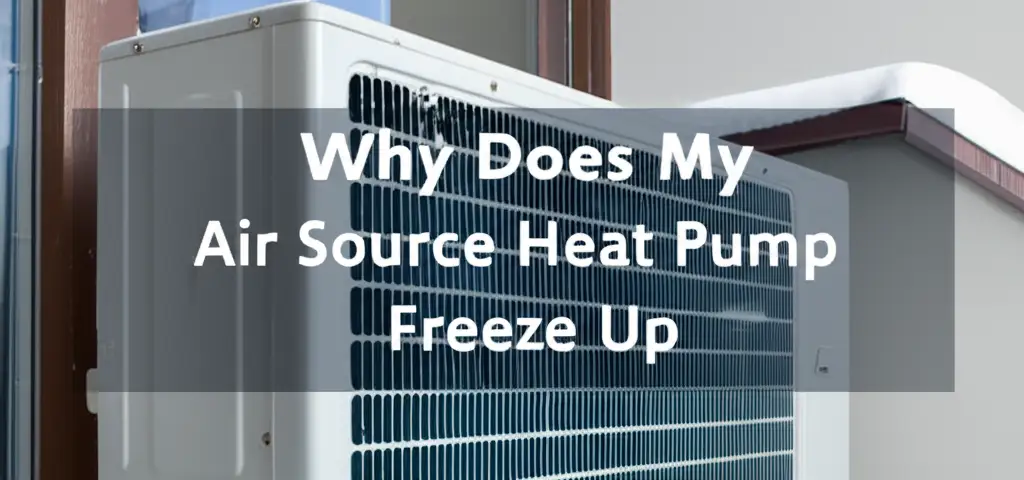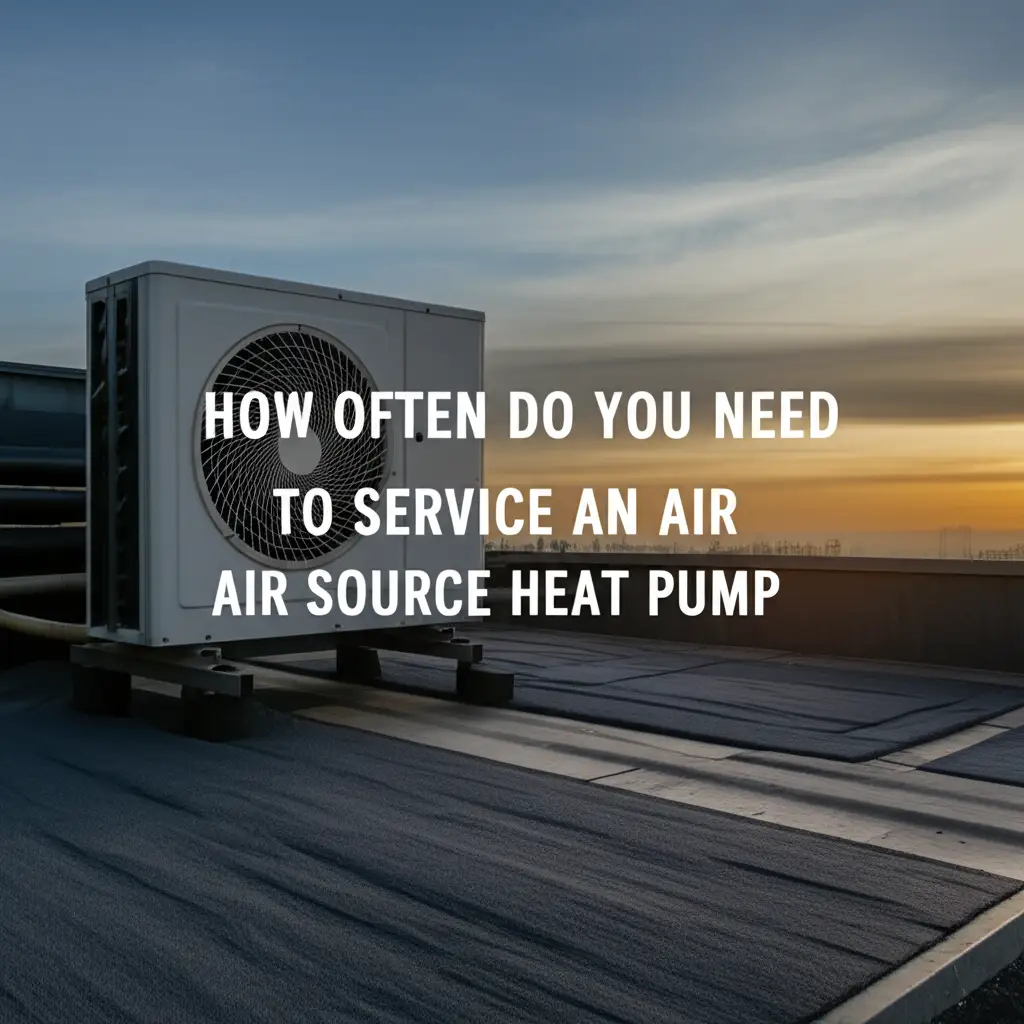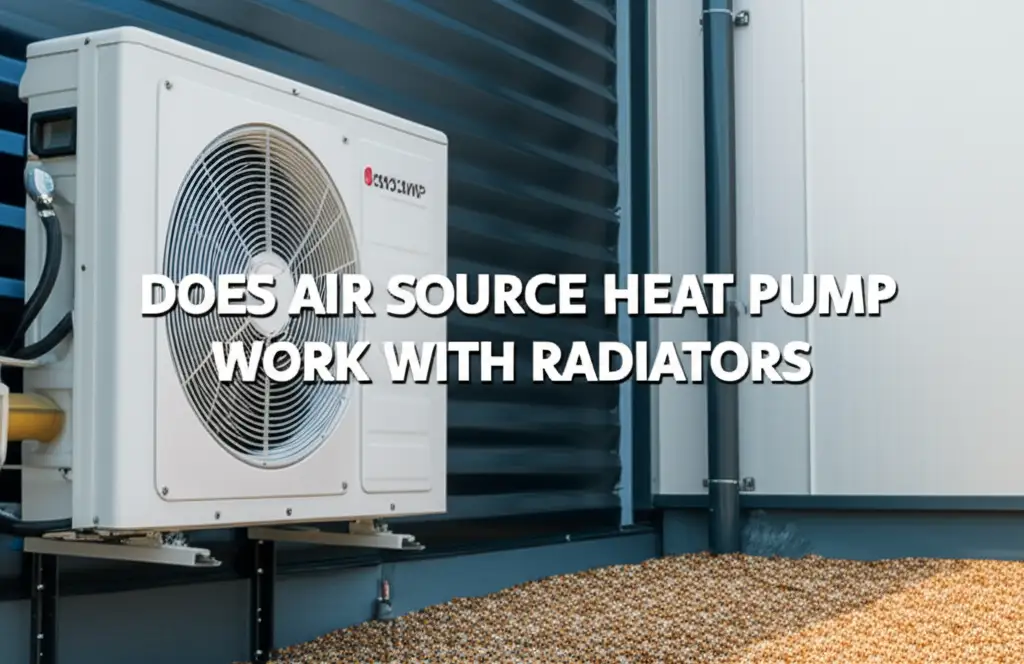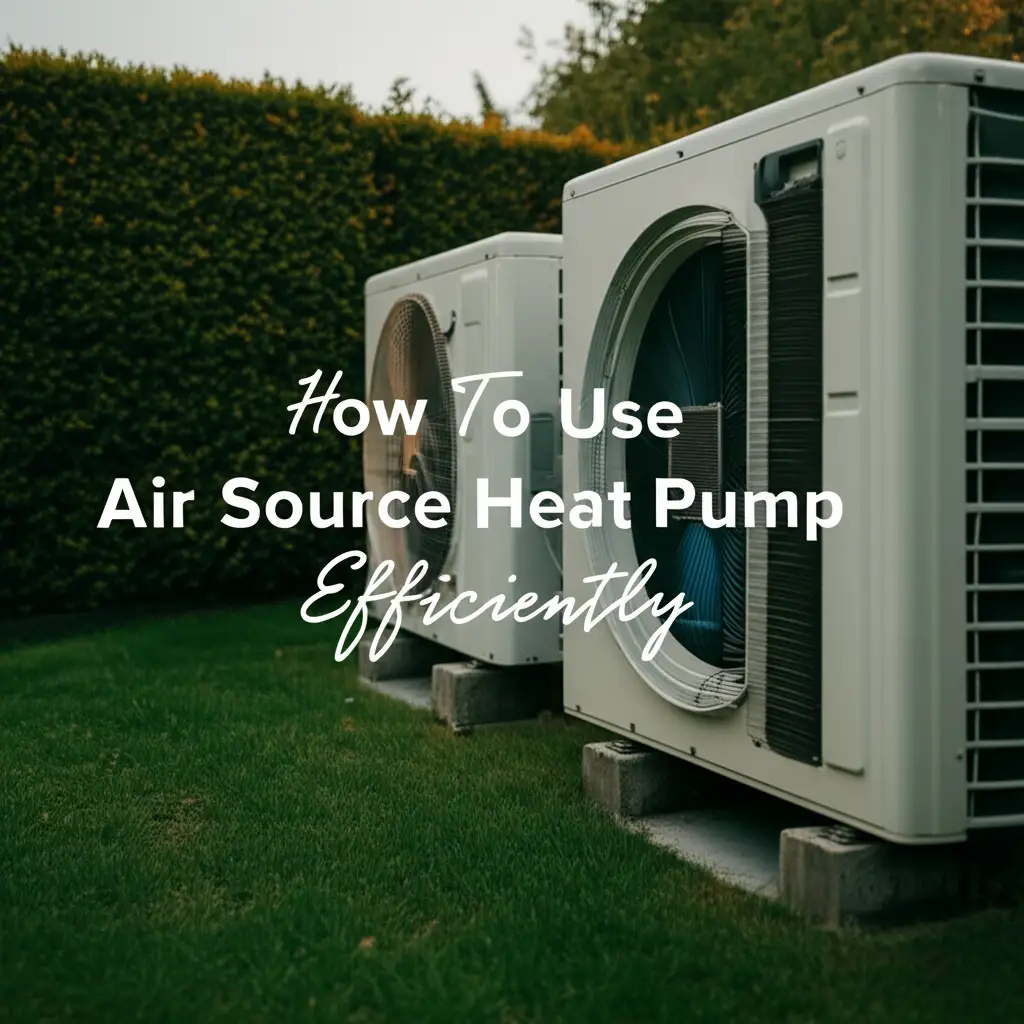· Todd Martin · Heating & HVAC · 18 min read
Why Does My Air Source Heat Pump Freeze Up

Why Does My Air Source Heat Pump Freeze Up? Understanding Ice Build-Up
Have you ever looked at your outdoor air source heat pump unit and seen it covered in ice? It can be concerning. Many homeowners wonder, “Why does my air source heat pump freeze up?” This sight often leads to worries about the system’s performance and longevity. Sometimes, ice on your heat pump is normal, part of its regular operation in colder weather. Other times, it signals a problem that needs attention. Understanding the difference is key to keeping your home warm and your energy bills low. This article will explain why heat pumps freeze, how to identify issues, and what steps you can take to resolve or prevent freezing. We will cover normal defrost cycles, common malfunctions, and essential maintenance tips.
Takeaway
When your air source heat pump freezes, consider these points:
- Normal Frosting: Light frost is common in cold, damp weather and clears with a defrost cycle.
- Abnormal Ice: Thick ice buildup or constant freezing indicates a problem.
- Common Causes: Low refrigerant, dirty filters, blocked coils, or sensor faults are frequent culprits.
- Action: Check basic maintenance items first, then call a professional for complex issues.
Clear Answer to the Main Query
Your air source heat pump freezes up due to either a normal defrost cycle, which removes light frost, or a fault in the system. Common faults include low refrigerant levels, restricted airflow from dirty filters or blocked coils, or sensor malfunctions that prevent proper defrosting.
Understanding Normal Defrost Cycles in Air Source Heat Pumps
It is common to see some ice on your air source heat pump’s outdoor coil, especially during cold, damp weather. This is usually part of its normal operation. When the heat pump extracts heat from cold outdoor air, the moisture in that air condenses and freezes on the coil. This process is similar to how a cold drink can collects condensation on a humid day. The system is designed to handle this.
Modern air source heat pumps have a built-in defrost cycle. This cycle automatically turns on to melt the ice that builds up on the outdoor coil. When the defrost cycle activates, the heat pump temporarily reverses its operation. It sends warm refrigerant through the outdoor coil. This warms the coil and melts the ice. Water drains away through the base of the unit.
The defrost cycle typically lasts for a few minutes, usually between 5 to 15 minutes. During this time, you might see steam rising from the unit. You might also hear a sizzling sound as the ice melts. The indoor fan often shuts off during defrost to prevent cold air from blowing into your home. The unit then returns to normal heating operation. Understanding this process helps distinguish normal behavior from a problem.
Normal defrosting ensures efficient operation. If ice builds up too much, it blocks airflow over the coil. This makes it harder for the heat pump to absorb heat from the air. Less heat absorption means the system works harder and uses more energy. Regular defrosting keeps the coil clear and the system running effectively. This is crucial for its performance. You can learn more about how these systems operate in different conditions by reading our guide on how does an air source heat pump work in cold weather.
Common Reasons Your Air Source Heat Pump Freezes Up
While some ice is normal, constant or heavy ice buildup points to a problem. Several issues can cause your air source heat pump to freeze excessively. These problems prevent the unit from defrosting properly or cause it to accumulate ice too quickly. Identifying the cause helps in finding the right solution. Ignoring these issues can lead to higher energy bills and potential system damage.
Low Refrigerant Levels
One of the most common reasons for an air source heat pump to freeze is low refrigerant. Refrigerant is the fluid that carries heat through the system. If the refrigerant level is too low, the outdoor coil gets colder than it should. This happens because there is not enough refrigerant to absorb heat efficiently. The coil drops below freezing point faster than normal, leading to excessive ice formation.
Low refrigerant is usually a sign of a leak in the system. Leaks can occur in the coils, lines, or fittings. A professional must find and fix these leaks. They also need to recharge the system with the correct amount of refrigerant. Attempting to add refrigerant yourself is dangerous and illegal without proper certification. A properly charged system runs efficiently and avoids freezing.
Airflow Restrictions
Proper airflow across the outdoor coil is critical for your heat pump. If airflow is blocked, the coil cannot absorb heat efficiently. This causes the coil to get too cold and freeze. Several things can restrict airflow.
- Dirty Air Filters: Clogged indoor air filters reduce airflow across the indoor coil, which indirectly affects the outdoor unit. Make sure to check and replace your filters regularly. A clean filter ensures good air circulation.
- Blocked Outdoor Unit: Debris like leaves, dirt, grass clippings, or snow can block the outdoor unit’s coil or fan. Clear any obstructions around the unit. Keep at least two feet of clear space around the outdoor unit for optimal airflow. Ensure the unit is not sitting in a puddle or accumulating snow around its base.
- Damaged Fan Motor: The outdoor fan pulls air through the coil. If the fan motor is faulty or the fan blades are bent, airflow will be reduced. A struggling fan motor might make unusual noises or spin slowly. This issue requires professional repair.
Regularly checking and cleaning your air filter is a simple step you can take. Make sure to keep the area around your outdoor unit clear.
Malfunctioning Defrost Control or Sensors
The defrost cycle relies on sensors and a control board to work correctly. If these components fail, the heat pump may not defrost when it needs to. This leads to ice building up.
- Defrost Sensor: This sensor monitors the temperature of the outdoor coil. If the sensor is faulty, it might not detect ice buildup. This prevents the defrost cycle from starting.
- Outdoor Temperature Sensor: This sensor tells the heat pump the outdoor air temperature. If it gives an incorrect reading, the unit might not initiate defrost at the right time. For example, if it incorrectly reads the temperature as above freezing, defrost will not run.
- Defrost Control Board: This is the brain of the defrost system. If the control board is faulty, it can send incorrect signals or fail to send any signals. This stops the defrost cycle from activating.
Problems with these components often require professional diagnosis. A technician uses specialized tools to test sensors and control boards. They can replace faulty parts to restore proper defrost operation. This ensures your heat pump runs smoothly.
Drainage Issues
During the defrost cycle, melted ice drains away from the unit. If this drainage is blocked, the water can refreeze around the base of the unit. This creates a large block of ice that can impede fan operation or block future drainage.
- Clogged Condensate Drain Line: The melted water flows through a condensate line. If this line gets clogged with algae, dirt, or debris, water backs up. It then spills and refreezes around the unit.
- Improper Unit Leveling: If the outdoor unit is not level, water may pool at one end instead of draining away properly. This standing water can freeze.
- Blocked Drain Holes: The base pan of the outdoor unit has drain holes. If these holes are blocked, water cannot escape. This leads to ice accumulation.
Regularly checking the drainage area around your heat pump is important. Ensure that water can flow freely away from the unit’s base. Clear any debris from the drain holes and ensure the condensate line is not blocked.
Electrical Problems
Electrical issues can affect various components within the heat pump, including the fan motor or control board. These problems can indirectly cause freezing. For example, a faulty fan motor due to an electrical issue will reduce airflow. This leads to ice buildup. Wiring problems or component failures within the electrical system can disrupt normal operation. This includes the defrost cycle. Electrical issues often require a professional electrician or HVAC technician to diagnose and fix. Do not attempt to work on electrical components yourself.
Improper Unit Sizing or Installation
Sometimes, the problem stems from the heat pump itself, or how it was put in. An improperly sized unit or a poor installation can lead to freezing issues.
- Undersized Unit: If your heat pump is too small for your home’s heating needs, it will run almost constantly to try and keep up. Continuous operation in cold, humid conditions can lead to excessive ice buildup that the defrost cycle cannot fully manage.
- Oversized Unit: An oversized unit cycles on and off too frequently. It might not run long enough to reach the necessary temperatures for a proper defrost cycle to complete. This can also lead to ice accumulation.
- Poor Installation: Incorrect refrigerant charge during installation is a common issue. If the charge is too low or too high, it affects the system’s efficiency and ability to defrost. Poor positioning, such as placing the unit in a shaded, damp area without good airflow, can worsen freezing problems. Consider how your unit was designed and placed, especially if you looked into how to design an air source heat pump system.
If you suspect your heat pump was improperly sized or installed, consult a qualified HVAC professional. They can assess the system and recommend solutions. This might involve system adjustments or, in rare cases, replacement.
The Impact of Freezing on Heat Pump Performance and Costs
When an air source heat pump freezes up, it significantly affects its performance. It also raises your energy costs. A thin layer of frost is normal and easily managed by the defrost cycle. However, thick ice buildup is a different story. It severely hinders the heat pump’s ability to operate efficiently.
Ice acts as an insulator on the outdoor coil. This insulation prevents the coil from effectively absorbing heat from the outside air. The heat pump must then work harder to extract the necessary heat. This increased effort means the system runs longer and uses more electricity. You will likely see a spike in your energy bills. This happens because the unit is struggling to keep your home warm. For more details on electricity use, you can check how much energy does air source heat pump use and why is my air source heat pump using so much electricity.
Furthermore, continuous freezing and strenuous operation can shorten the lifespan of your heat pump’s components. The compressor, which is the heart of the system, works under greater stress. This can lead to premature wear and tear. Fan motors may also be damaged if ice buildup obstructs the blades. If water constantly refreezes at the base, it can cause corrosion or damage to the unit’s internal parts. Over time, these issues can lead to expensive repairs or even the need for a full system replacement. Addressing freezing issues promptly saves you money in the long run. It protects your investment.
Troubleshooting Steps for a Frozen Heat Pump
If you see your air source heat pump covered in ice, do not panic. There are some steps you can take yourself to troubleshoot the issue before calling a professional. These steps can often resolve minor freezing problems.
- Turn Off the Unit: First, turn off your heat pump at the thermostat. Switch it to “off” or “emergency heat” mode if your system has it. This prevents further damage and allows the ice to melt naturally. Do not try to chip away the ice with sharp objects, as this can damage the coil.
- Clear Debris: Inspect the outdoor unit. Remove any leaves, twigs, dirt, or other debris that might be blocking the coil or fan. Ensure there is at least two feet of clear space around the unit. Clear away any snow or ice accumulation from the base of the unit.
- Check Air Filters: Go inside and check your indoor air filter. If it looks dirty or clogged, replace it. A clean filter ensures good airflow. This can impact the outdoor unit’s performance.
- Inspect Drain Lines: Look for any visible blockages in the condensate drain line. This line usually runs from the indoor unit to a drain or outside. Clear any clogs you can safely reach. Ensure the outdoor unit’s base pan drain holes are clear.
- Allow for Natural Defrost: Once the unit is clear of debris and the filter is clean, let the ice melt naturally. This might take several hours, depending on the amount of ice and outdoor temperature. You can gently pour warm (not hot) water over the coil to speed up melting, but be careful not to damage anything.
- Restart the System: Once all the ice has melted, turn your heat pump back on at the thermostat. Monitor it for the next few hours or days. See if the freezing problem returns. If it does, or if the unit continues to struggle, it is time to call for professional help.
Taking these initial steps can often fix simple freezing issues. They help determine if the problem is minor or requires expert attention.
When to Call a Professional for Heat Pump Freezing
Sometimes, a frozen air source heat pump requires expert intervention. Do not delay calling an HVAC professional if you encounter certain situations. Early intervention can prevent more significant damage and costly repairs. A professional technician has the tools and expertise to diagnose complex problems.
You should call a professional if:
- Persistent Freezing: The heat pump continues to freeze up even after you have performed basic troubleshooting steps. This suggests an underlying mechanical or electrical issue.
- Thick, Solid Ice: The unit is covered in a very thick layer of ice, much more than light frost. This indicates a severe malfunction in the defrost system or other critical components.
- System Not Heating: Your home is not getting warm, or the heat pump is blowing cold air. This means the freezing is severely impacting its ability to transfer heat.
- Unusual Noises: You hear strange sounds like grinding, buzzing, or clicking coming from the outdoor unit. These noises can indicate a failing fan motor, compressor issues, or other mechanical problems contributing to freezing.
- Suspected Refrigerant Leak: If you notice a hissing sound, oily residue around the unit, or the outdoor coil is consistently extremely cold, you might have a refrigerant leak. Only a certified technician can safely detect and repair refrigerant leaks and recharge the system.
- Electrical Issues: You suspect electrical problems are causing the freezing. Do not attempt electrical repairs yourself. This is dangerous.
- Error Codes: Your thermostat or heat pump unit displays error codes. These codes provide clues to the system’s internal problems. A professional can interpret them.
A trained professional can accurately diagnose issues like low refrigerant, faulty sensors, or control board failures. They have specialized equipment to test components and ensure proper system operation. Investing in professional repair ensures your heat pump runs safely and efficiently. Also, consider the benefit of regular servicing; you can learn more about this through articles like how often should an air source heat pump be serviced.
Preventative Maintenance to Avoid Heat Pump Freezing
Regular maintenance is key to preventing your air source heat pump from freezing up. Proactive steps can keep your system running smoothly and efficiently. They also extend its lifespan. I follow these steps to make sure my heat pump works well.
- Regular Filter Changes: Replace your indoor air filter every 1-3 months. This depends on usage and air quality. A clean filter ensures good airflow. This prevents the indoor coil from getting too cold and affecting the outdoor unit.
- Keep Outdoor Unit Clear: Regularly inspect and clear the area around your outdoor unit. Remove leaves, grass clippings, dirt, and any other debris. During winter, remove snow buildup from around and on top of the unit. Ensure that ice cannot form a dam around the base. Maintain at least two feet of clear space around the unit on all sides. This allows for proper airflow.
- Check for Proper Drainage: Ensure that the drain holes in the base pan of the outdoor unit are not clogged. Make sure the condensate drain line is clear and free of blockages. This allows melted ice to drain away properly.
- Schedule Annual Professional Service: Have a qualified HVAC technician inspect your air source heat pump every year. This is ideally done in the fall before the heating season begins. A professional will check refrigerant levels, test sensors, inspect electrical components, clean coils, and ensure the defrost cycle is functioning correctly. They can spot potential problems early. This prevents them from becoming major issues. This annual check-up is one of the most important steps. You can often save money by bundling this with an air conditioning check-up in the spring. Remember that regular servicing helps avoid bigger issues and keeps your heat pump efficient. More details on costs and efficiency can be found here: why is my air source heat pump costing so much.
- Install a Heat Pump Stand or Riser: If your heat pump often sits in snow or standing water, consider installing a stand or risers. This elevates the unit. It allows snow and ice to build up underneath without directly impacting the coils or fan. It also improves drainage.
- Monitor Performance: Pay attention to your heat pump’s performance. Listen for unusual noises. Check your energy bills for unexpected increases. Notice if the defrost cycle seems to run too often or not at all. Early detection of problems can prevent a full freeze-up.
By following these preventative maintenance steps, you can significantly reduce the chances of your air source heat pump freezing up. You ensure it operates reliably throughout the cold months.
FAQ Section
Q1: Is it normal for my air source heat pump to have some ice on it? A1: Yes, it is normal for air source heat pumps to develop a thin layer of frost or ice on the outdoor coil in cold, humid weather. This is a common occurrence. The heat pump has a built-in defrost cycle. This cycle will automatically melt this ice within a few minutes. If the ice is thick or constant, then it indicates a problem.
Q2: How long should a heat pump’s defrost cycle last? A2: A typical heat pump defrost cycle usually lasts between 5 to 15 minutes. The exact duration depends on the amount of ice, the outdoor temperature, and the specific unit model. During this time, the unit temporarily switches to cooling mode to melt the ice on the outdoor coil.
Q3: Can a dirty air filter cause my heat pump to freeze? A3: Yes, a dirty air filter can indirectly cause your heat pump to freeze. A clogged filter restricts airflow over the indoor coil. This causes the indoor coil to get too cold. This imbalance affects the refrigerant flow to the outdoor coil, making it colder and more prone to freezing.
Q4: What should I do if my heat pump is completely frozen over? A4: If your heat pump is completely frozen, first turn off the unit at the thermostat or breaker. This prevents damage. Then, clear any debris from around the unit. Allow the ice to melt naturally. Do not chip the ice. Once melted, restart the unit. If it freezes again, call a professional.
Q5: How often should I have my air source heat pump professionally serviced to prevent freezing? A5: You should have your air source heat pump professionally serviced at least once a year. This is ideally done in the fall before the heating season. Regular maintenance ensures all components, including the defrost system, are working correctly. It also helps detect and fix minor issues before they lead to major problems like freezing.
Q6: Can low refrigerant cause permanent damage to my heat pump? A6: Yes, operating a heat pump with low refrigerant can cause permanent damage. Low refrigerant levels make the compressor work harder. This puts excessive strain on it. This can lead to premature wear and tear, compressor failure, and costly repairs or replacement. It is crucial to address refrigerant leaks promptly.
Conclusion
Seeing your air source heat pump covered in ice can be concerning. But now you understand why this happens. Sometimes, it is just a normal defrost cycle at work, especially during cold, damp weather. This is how your system maintains efficiency. However, thick, persistent ice buildup often signals a problem. Common culprits include low refrigerant levels, blocked airflow due to dirty filters or debris, or issues with the defrost sensors and control board.
Taking proactive steps is crucial. Regularly change your air filters and keep the outdoor unit clear of obstructions. These simple actions can prevent many freezing issues. If you notice persistent freezing, unusual noises, or a lack of heat, it is time to call a qualified HVAC professional. They can accurately diagnose and fix complex problems like refrigerant leaks or faulty components. Regular professional servicing ensures your air source heat pump runs efficiently and reliably, keeping your home warm and your energy bills in check. Do not let a frozen heat pump leave you in the cold. Act promptly to ensure your system performs at its best.
- air source heat pump
- heat pump freezing
- defrost cycle
- HVAC troubleshooting
- home heating
- heat pump maintenance





